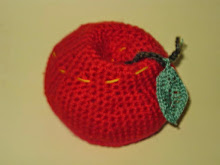







All these structures are close to cone shapes, and can be pointy to the extreme. What is the point, literally, to having horns etc?
In the biodynamic agriculture of Rudolph Steiner the cow horn is used to make 500, the manure preparation in a cow's horn which is buried for months in the ground, and cosmic energies are collected. Later the horn is dug up, and the 500 is used in tiny amount in clean water and stirred making a vortex, then reversing the vortex, making chaos turbulence, then making vortex again, for one hour, then a fine spray is delivered unto the farm or garden.
Partly it is fine microbial inoculum which is delivered, but also cosmic energy.
In Australia, Alex Podolinsky has mentored many farmers.
Here we have cow horn and vortex, both subjects of this blog.
Many reference online to horns, tusks, fibonacci extol the connection; one by Donald E. Smamek calls it Fibonacci Flim Flam.
Here I would like to demonstrate a model which supports the mathematics.
I began with the huge project of making a snail, I thought , with many chambers, so I might need to go to F21 which is 10946. I used mercerised crochet cotton, size 40 and a No. 2 crochet hook and half treble stitch. At one point in the making I suspected it would not make a snail shape, but more likely a horn shape, and so it was to be.
The results are posted here but I have trouble organising the images on blog. They seem to go to top of page so I have to enter them in reverse order. Plus the spacing goes haywire and one has to scroll a long way down to get to some text. Sorry about that.
Also I have maths tables giving Equations! but the blog seems to be having a nervous breakdown downloading these, as you can see in the section on vortexes, so I will have to omit them and only briefly sketch them. With luck, a book might come out of all this!
The model before spiralling. looks like the brain and falls naturally into 2 hemispheres. It makes me wonder if the brain is actually made of a flat hyperbolic fan shape, all connected together.
Weird how brain and horn are intrinsically the same fibonacci model shape! Wonderful to wonder why animals need horns, apart from fighting etc.
We know that horns are hollow inside. Maybe the animal dissolves the inside as it grows, or maybe there is another process altogether!
I nearly broke both thumbs and blistered fingertips trying to make it all spiral. If I had used a treble or double treble stitch it might have been more easily flexible. As it is the 4 balls of cotton cost $30.
One image shows the model stretched out before spiralling. The frilly edge measures 21 metres and the equation which matches this is x= F(n-13) x 100000 / Fn where 1000 stitches measure 191.92 cm. The outer edge is F(n-13) metres, an exact fibonacci number if this thickness of yarn is used. My cotton made 208 cm for 1000 stitches, and this is close to 191.92.
There is another equation having F(n-10) if the yarn is thicker like wool! Next time.
There are many books out on fibonacci series, eg "Wild Fibonacci" a childrens book by Joy N. Hulme and illustrated in acrylic paintings by Carol Schwartz.

No comments:
Post a Comment